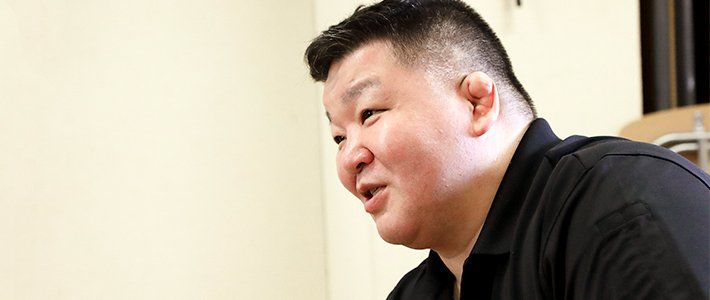
“Cool Traditions” Stay in Tune with Modern Life
Training Future Champions: An Interview with Sumō Stablemaster Takadagawa Katsumi
Sports Culture- English
- 日本語
- 简体字
- 繁體字
- Français
- Español
- العربية
- Русский
After an intense early-morning training session, Takadagawa Katsumi, head of the Takadagawa stable in Tokyo’s Kiyosumi-Shirakawa district, sits down to eat with his wrestlers. His features, stern as he watched over the earlier practice, have softened as he jokes and talks with his charges over a hearty communal stew known as chanko. As a wrestler Takadagawa went by the name Akinoshima and was known as a giant killer, earning a record-breaking 16 “gold stars” over his career for toppling yokozuna, the “grand champions” of the sport. Having himself climbed to the level of sekiwake, sumō’s third loftiest rank, he retired in 2003 and has since dedicated his energies to training the next generation of wrestlers. Among his apprentices are two wrestlers, Ryūden and Kagayaki, who compete in sumō’s top division. In a whirlwind of eating, talking, and telephone calls he shares his views of sumō, including his goals as a stablemaster, and the increasing popularity of the sport overseas.
An Eye to Japan
Takadagawa says he has a firm policy when it comes to allowing wrestlers into his stable: “I don’t accept foreigners.” While a surprising stance in this day and age, the stablemaster says he is concerned by the decline of Japanese wrestlers in sumō’s top ranks and subsequent 15-plus-year dominance of Mongolian-born wrestlers. With a chuckle he says, “In my opinion Japanese people have grown soft because they wander through life half asleep.” Growing serious, he explains why he is focused on Japanese wrestlers. “Before Japan became prosperous, Japanese sumō wrestlers put their hearts and souls into wrestling for the sake of their families. Today, foreigners are similarly motivated, wanting to give back to their parents or to earn money. Each stable is currently allowed to have one foreign-born wrestler, and it is common to bring over young, physically robust prospects on the assumption that they—especially the Mongolians—will climb the ranks. Having a well-built foreign wrestler has become the norm at stables, but I want to train strong Japanese wrestlers who can seriously contend for the top spots.”
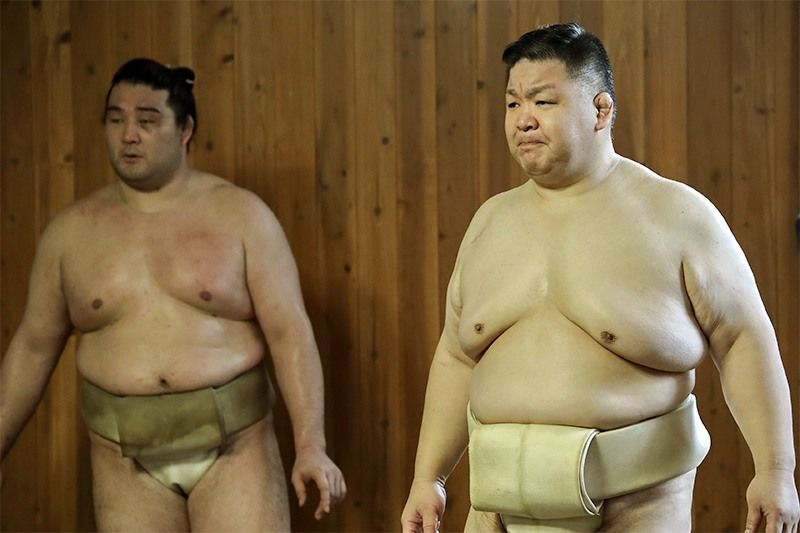 Stablemaster Takadagawa Katsumi (right) watches intently during a training session.
Stablemaster Takadagawa Katsumi (right) watches intently during a training session.
A sumō wrestler’s most defining feature is his imposing physique, and not surprisingly the first thing stables zero in on when recruiting is size. However, girth alone is meaningless without also building a body suitable for sumō through regular training and eating the right diet over many years. Due to various factors, though, stables are finding it increasingly difficult to lure new wrestlers. “It used to be that the only sports in which one could earn a lot of money were baseball and sumō,” explains Takadagawa. “Now, though, stables have to vie with other high-profile sports for new recruits. And this is on top of feeling the pinch of Japan’s declining birthrate.” An added challenge for stablemasters is developing a strong bond with novices once they have entered a stable. There has recently emerged a trend toward people joining sumō later and remaining in the ring for longer. “In the past wrestlers usually retired at 30,” states Takadagawa. “But now it’s not unheard of for someone to remain in the ring until they are 40. As a result, newcomers don’t have to be as young as they used to; although ideally they shouldn’t be older than 20. Most of my new recruits are around 15.” Along with size, wrestlers also need mental fortitude to endure the sport’s stoic lifestyle. In a sumō stable, learning social etiquette through communal living along with strict training to build strength and skill are crucial. Achieving the top rank of yokozuna hinges as much on a wrestler’s character as it does on their match results. Takadagawa emphasizes that in considering whether to accept a new recruit, stablemasters above all else look at whether the person is earnest. “Many wrestlers now join from university sumō clubs, but the training they do is child’s play,” says Takadagawa with a wry smile. “Some show promise, of course, but they’re not as obedient as a wrestler who joined while in junior high school.” He believes that recruiting young is the best way to instill the virtues necessary for a successful sumō career. “Living away from home teaches the importance of the parent-child relationship and builds character. The strongest wrestlers are those who obediently listen to what they are taught and seriously devote themselves to training. Aptitude is secondary.” He says he will consider accepting a new prospect as long as they seem serious, but adds that his basic policy is not to take anyone who has already graduated from high school.
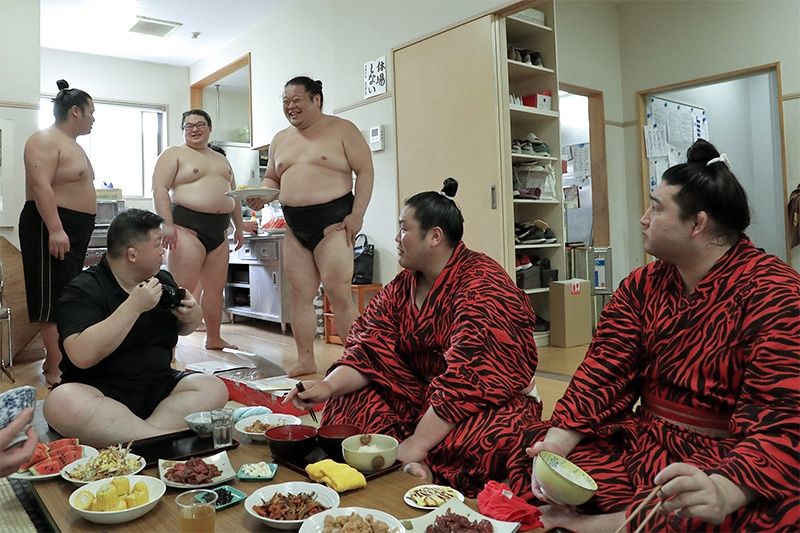 Wrestlers talk at ease with Takadagawa, who feels it is essential to build a bond akin to a parent-child relationship.
Wrestlers talk at ease with Takadagawa, who feels it is essential to build a bond akin to a parent-child relationship.
A Flexible Hierarchy
Although sumō from the outside appears to have a rigid hierarchy, Takadagawa argues that in reality it is more egalitarian than any other professional sport, with wrestlers moving up and down the ranks according to their results at each tournament. “Japanese schools have a strict junior-senior relationship among students based on age,” he explains. “For professional wrestlers, however, rank even determines what order they eat. Of course, a younger wrestler must remember his manners even if he rises to a higher rank or risk losing the respect of his colleagues.” He adds that nationality has no bearing on rankings, as evidenced by the careers of Mongolian-born yokozunas Hakuhō and Kakuryū, and Georgian wrestler Tochinoshin rising to ōzeki, sumō’s second highest rank. “Fans will root for a wrestler from any country who has talent and respects the spirit of sumō. Many foreigners become naturalized Japanese citizens and remain in the Japan Sumō Association as a stablemasters. Although very traditional, sumō has always been open to people from across society. Even in feudal times when Japan had a rigid social hierarchy of samurai, farmers, artisans, and merchants, a strong wrestler who started life as a lowly farmer could prove his worth and attain a higher social rank. There are of course many who point to women not being allowed to enter the ring as discrimination. However, sumō has a deep respect for women and the important roles they play in the lives of wrestlers.”
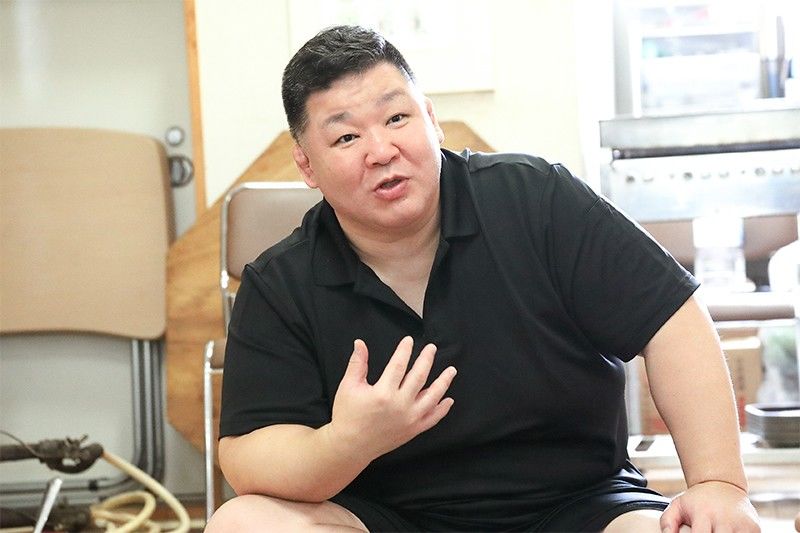 Takadagawa says it is important to maintain traditions while also being conscious of change from one era to the next.
Takadagawa says it is important to maintain traditions while also being conscious of change from one era to the next.
Bourgeoning Interest Abroad
Today sumō is broadcasts across the globe via satellite and the Internet, expanding its popularity in more and more countries. The increase in tourists visiting Japan has also boosted the number of foreign spectators at the various sumō tournaments held through the year. Takadagawa points to the simplicity of sumō as helping attract new fans to the sport. “A sumō bout itself is extremely straightforward with the outcome determined by a wrestler exiting the ring, touching the ground with a hand, or falling. The sport goes much deeper than this of course, but you can still appreciate it without understanding the finer points right away.” Emitting a warm laugh Takadagawa admits that’s many of sumō’s most ardent fans are from overseas. “Japanese nowadays can’t be bothered with traditions, and instead it is foreign enthusiasts who value the old ways. They are the ones properly studying up on sumō and thinking deeply about its traditions.”
Life’s Lessons
Takadagawa views training as more than preparing wrestlers to fight an opponent, but also as a way to teach them how to battle with themselves. At the end of each morning session he talks to his charges about the impression their efforts left on him. “I teach them about the philosophy of sumō as well as advise them about how best to live our lives. I learn from these talks as well, and in a way we’re all training together.” He says that his goal is to build the physical strength of wrestlers along with their moral character. “It’s not merely about brawn. Wrestlers must also cultivate a sense of humanity and learn to respect their seniors, juniors, and parents. I want them through hard training to gain an understanding of other peoples’ feelings. I imagine that apprentice wrestlers find it tiresome how I’m always repeating myself, but as humans we forget things and I want to be certain that my teachings stick in their minds. A sumō stable is a school where people learn how to be humane.”
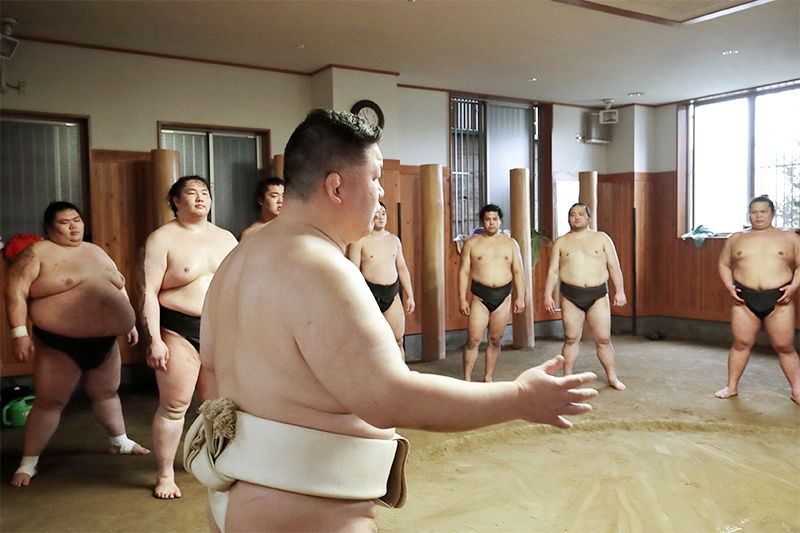 Takadagawa concludes the morning training session with some words of advice.
Takadagawa concludes the morning training session with some words of advice.
(Originally published in Japanese on December 7, 2018. With thanks to sumō web magazine Osumō-san. Reporting and text by Nippon.com. Photographs by Hanai Tomoko.)